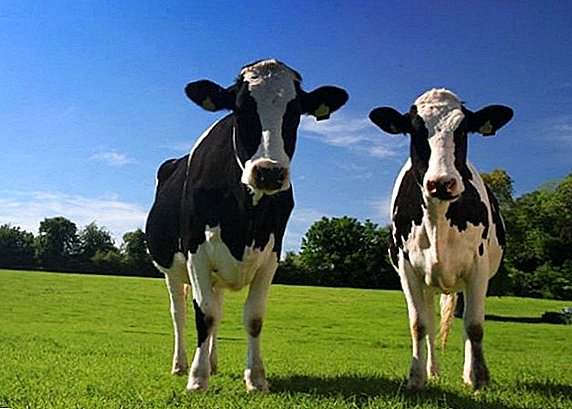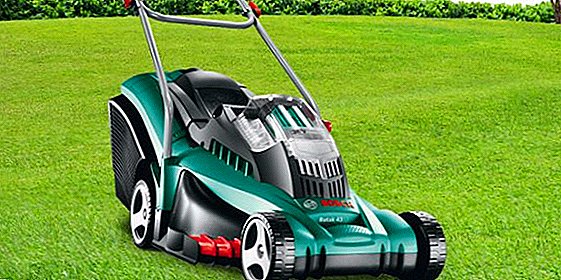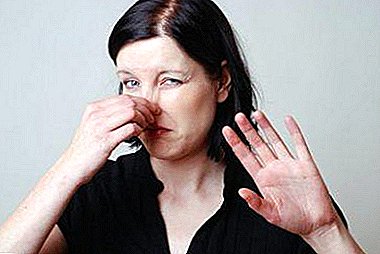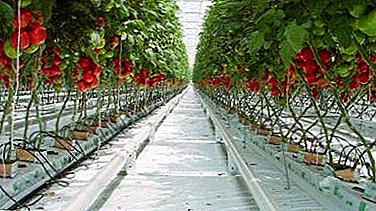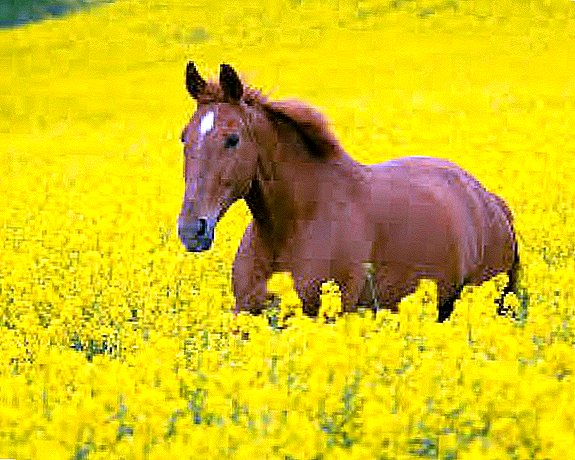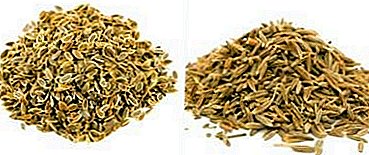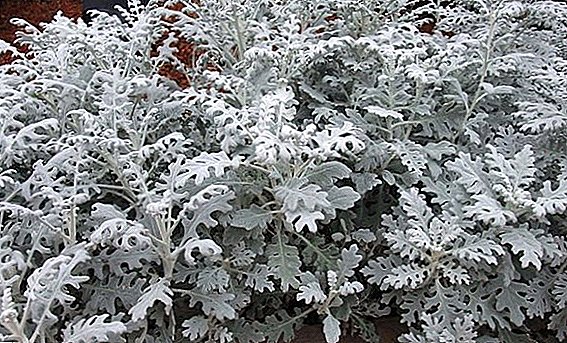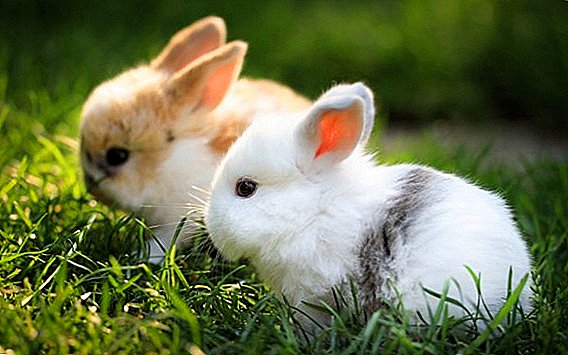 Breeding rabbits begins with questions about the conditions and nutrition of fluffy. Novice breeders should know which foods are desirable in the diet, and which are contraindicated. In this article we will discuss whether it is possible to give horseradish to Fuzzies.
Breeding rabbits begins with questions about the conditions and nutrition of fluffy. Novice breeders should know which foods are desirable in the diet, and which are contraindicated. In this article we will discuss whether it is possible to give horseradish to Fuzzies.
Can rabbits give horseradish
For food, rabbits can be given the green part of a plant, both grown in their garden and wild growing. The benefits of the product are enormous - the plant has anti-putrid, anti-bacterial and anti-inflammatory properties.  It is a source of ascorbic acid, supporting the immune system, vitamins B, E, A, which are important for the nervous system, cardiac activity, and the health of the gastrointestinal tract. Fiber contained in the leaves along with mustard oil helps to digest food and gently cleanse the intestines.
It is a source of ascorbic acid, supporting the immune system, vitamins B, E, A, which are important for the nervous system, cardiac activity, and the health of the gastrointestinal tract. Fiber contained in the leaves along with mustard oil helps to digest food and gently cleanse the intestines.
Minerals in horseradish contribute to the strengthening of bone and muscle tissue, teeth, health of coat and skin.
A balanced diet will help pets to develop properly and continue to be healthy and active. Find out whether silage, quinoa, radish, bran, bread and cereals can be given to rabbits.
How to give
Due to the harsh taste, the animal may refuse to eat greens in its pure form, so most often horseradish leaves are combined with other green foods. 
Fresh
Green horseradish is crushed and added to the mash from grain mixtures and herbs. Begin to give additional feeding at the age of two months. For the first time, a quarter of a sheet is enough. To smooth out some sharpness, horseradish is combined with sour nettle or sugar beet tops. Give supplement 2-3 times a week, in small portions.
You will certainly be useful to get acquainted with all the features of feeding rabbits at home.
In dried form
For the winter, the tops are dried, while it is no less useful, since closer to winter, it has the highest concentration of vitamins. Pure dried product is not given, it is also mixed into wet food or hay mix. Dried products are undesirable to give often and in large quantities, so as not to provoke indigestion.
Product Collection Rules
If there is no own planting with culture, then the product is purchased on the market or wild grown. It should be noted that proximity to roads means saturation with toxins and exhaust gases, such a product will not bring benefits. Collect raw materials need to be away from industrial areas, roads, in clean areas. Greens should be clean, not corroded by insects, bright green.  In winter, the leaves are dried both whole and crushed. To dry, scatter on a cloth or paper, leave in a ventilated room, not under sunlight.
In winter, the leaves are dried both whole and crushed. To dry, scatter on a cloth or paper, leave in a ventilated room, not under sunlight.
Grass is the main feeding element of rabbits. Find out what grass can be given to rabbits, and which is poisonous to them.
Contraindications and harm
It is undesirable to give horseradish leaves to pregnant and lactating females, as the volatile oils and essential oils contained in them can damage the embryo and also affect the taste of milk.
Overdose symptoms are as follows:
- vomiting;
- weakness;
- diarrhea;
- thirst.
 Thirst in a rabbit is one of the symptoms of horseradish overdose Do not give horseradish in large quantities: it can provoke inflammation of the mucous membranes and disrupt digestion.
Thirst in a rabbit is one of the symptoms of horseradish overdose Do not give horseradish in large quantities: it can provoke inflammation of the mucous membranes and disrupt digestion.Rabbit breeders should find out if rabbits eat mugs and wormwood.
What else can feed the rabbits
In addition to horseradish leaves, fluffies can be fed with a variety of vegetables and fruits:
- To saturate the body with enough vitamins, it is recommended to pamper eared fruit with fruits: dried apples and pears, you can give a piece of banana, because it is rich in fiber, but not the peel, but the flesh.
- Carrots and sugar beets are very useful for animals, their two-month individuals are given 100 g per day. Vegetables cut into cubes or rubbed on a large grater.
- Everyone knows about the love of rabbits for cabbage, but you also need to know that the stalk is contraindicated for them, only leaves can be given. And eared with pleasure eat not only fresh, but sour cabbage.
- The pumpkin is useful for digestion, it is more preferable for kids to give it boiled, crushed in mashed potatoes.
- Squash raw, cut into cubes, give pets to improve the appetite.
- For females during lactation, rhubarb is useful: it improves the quality of milk, contributes to its development.
 Vegetables and herbs, being a natural source of nutrients, occupy 80% in the diet of rabbits. However, you need to carefully study the list of products that are dangerous to the health of pets.
Vegetables and herbs, being a natural source of nutrients, occupy 80% in the diet of rabbits. However, you need to carefully study the list of products that are dangerous to the health of pets.

